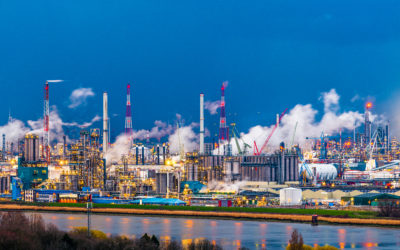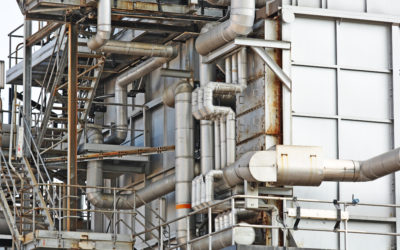Enhancing Heat Exchanger Efficiency in Refineries: Tackling Fouling Challenges to Reduce Operational Costs
Heat exchangers are critical to refinery operations, enabling the transfer of heat between different process streams. They play a vital role in maintaining energy efficiency, optimizing production, and ensuring smooth refinery operations. However, heat exchanger efficiency can be severely compromised by fouling—a common issue where unwanted deposits build up on heat transfer surfaces. Fouling often leads to a cascade of operational problems, including increased maintenance downtimes, reduced heat transfer efficiency, and significantly higher operational costs.
The Impact of Heat Exchanger Fouling on Refinery Operations
Heat exchanger fouling is a major challenge for refineries, affecting both the efficiency and reliability of operations. Fouling occurs when impurities, such as scale, biological growth, or particulate matter, accumulate on the heat exchanger surfaces. This buildup impedes heat transfer by creating an insulating thermal resistance layer, which forces the system to consume more energy to achieve the desired temperature control. As a result, the refinery’s overall energy efficiency declines drastically, leading to increased fuel consumption and higher energy costs.
Moreover, fouling exacerbates wear and tear on equipment, as heat exchangers must operate under more and more strenuous conditions. This heightened strain accelerates the degradation of materials, increasing the likelihood of equipment failure. To prevent catastrophic failures and ensure continued operations, refineries are often forced to schedule maintenance downtimes more frequently than desired. These downtimes not only disrupt production but also contribute to significant financial losses. The costs associated with cleaning or replacing fouled heat exchangers, coupled with the loss of production during maintenance, can severely impact a refinery’s profitability.
Maintenance Challenges and Economic Implications
The maintenance of heat exchangers in refineries is a complex and costly endeavor. Cleaning fouled heat exchangers typically requires shutting down operations, disassembling equipment, and employing chemical or mechanical cleaning methods. The frequency of these maintenance activities depends on the severity of fouling, which can vary based on factors such as the quality of the processed materials, operating conditions, and the type of heat exchanger used.
Every maintenance downtime represents a loss in production, which translates directly into lost revenue. Furthermore, the costs of labor, cleaning agents, replacement parts, and energy consumption during the cleaning process add up quickly. Over time, these recurring costs can erode a refinery’s profitability, making the management of heat exchanger fouling a top priority.
Strategies for Mitigating Fouling and Improving Efficiency
Refineries are continually seeking ways to mitigate fouling and enhance the efficiency of their heat exchangers. One common approach is the use of chemical additives that inhibit the formation of fouling deposits. While effective to some degree, this method often involves the ongoing expense of purchasing and administering these chemicals. Additionally, some chemicals may introduce environmental concerns, necessitating careful management and disposal.
Another strategy involves the use of advanced materials and coatings designed to resist fouling. For instance, nanocomposite coatings have shown promise in reducing the adhesion of fouling substances to heat exchanger surfaces. These coatings create a smooth, low-energy surface that minimizes the buildup of deposits, thereby enhancing heat transfer efficiency and extending the intervals between maintenance shutdowns.
HeatX Nanocomposite: A Solution to Fouling Challenges
One innovative solution that has gained attention in the industry is HeatX nanocomposite surface treatment, which is specifically designed to address the challenges of heat exchanger fouling. HeatX nanocomposite creates a durable, ultra slick, anti-fouling surface that significantly reduces the accumulation of deposits on heat exchanger surfaces. By mitigating fouling, HeatX improves heat transfer efficiency, leading to lower energy consumption and reduced operational costs.
Refineries that implement HeatX nanocomposite surface treatments can benefit from extended maintenance intervals, as the need for frequent cleaning and repairs is greatly diminished. This not only reduces downtime and maintenance costs but also enhances the overall reliability and profitability of refinery operations. Furthermore, the long-lasting nature of the HeatX surface treatment ensures that refineries can maintain optimal efficiency over time, resulting in significant cost savings.
Addressing heat exchanger fouling is crucial for maintaining the efficiency and profitability of refinery operations. By adopting advanced solutions like HeatX nanocomposite, refineries can mitigate the impact of fouling, reduce maintenance downtimes, and achieve substantial cost savings. As the industry continues to seek ways to optimize operations, innovative technologies like HeatX will play an essential role in driving efficiency and profitability.
To learn more, drop us an email by clicking the link below.



